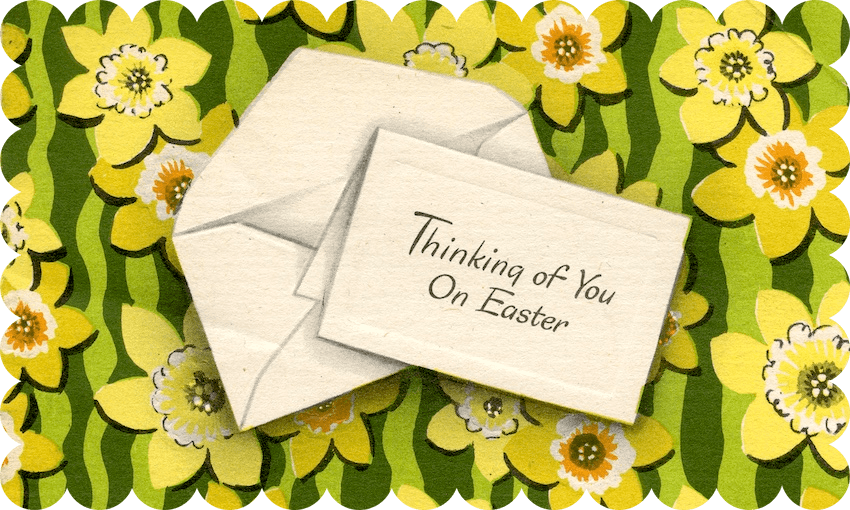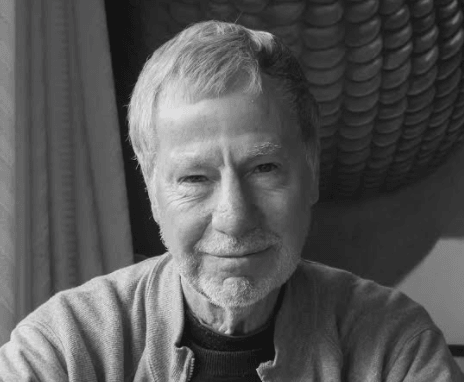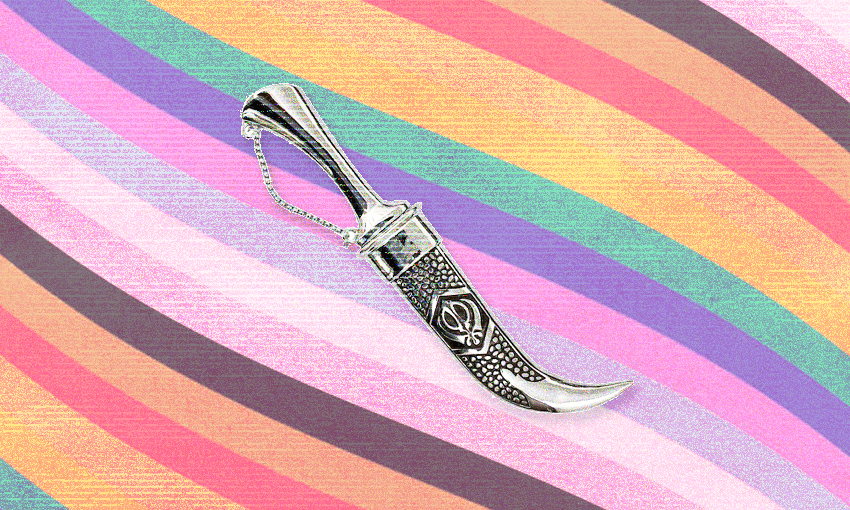As a child, David Hill remembers Easter as a solemn four days where nothing was open and playing outside could earn stern looks from the neighbours. How things have changed (for the better).
Originally published in 2023.
Napier in the mid-1950s. The day before Good Friday. “We’re all Christians here,” our school principal tells the special Easter assembly. “Or if we’re not, we keep our opinions to ourselves.”
So we sing hymns, including that one about “A green hill far away / Wihout a city wall / Where our dear Lord was crucified / who died to save us all”. There’s a sermon. (Yes, this is a state school.) We recite The Lord’s Prayer. Wally Repia, who stammers, is rebuked for not joining in.
Then the country shuts down for four days. Pretty well every shop and business closes. In the mid-1950s, weekends are like that, anyway, but four days in a country where a home like ours didn’t have a fridge till 1955 and a car till 1957 still means a logistical headache.
Easter sport? Frowned upon. Mowing the lawns? Not on Good Friday or Easter Sunday, unless you want disapproving looks over the fence. Even hanging out the washing can bring tutting and head-shaking. It’s four days of national mourning – after all, there’s been a death in the Christian family.
We kids normally jump at any holiday, but we don’t jump very high during these four days, especially not in the street or playground, where passing voices may demand “Don’t you know it’s Easter?” My pagan parents sometimes let me go to my mate Bruce, even on Good Friday, but if our commando games rise above a murmur, Bruce’s Mum appears, hissing “Not till 3 o’clock, remember!” The hour of Christ’s supposed deposition from the cross, in case you didn’t know.
Seventy years later? Well, we’re certainly not all Christians, and those who aren’t don’t necessarily keep their opinions to themselves.
We’re less religious overall. In the 2001 census, 29.6% of NZers identified as “No Religion”. By the last, 2018 census, that proportion had rocketed to 48.2%. Another 6.7% were “Undeclared”, so agnostics / atheists now outnumber all faith adherents combined. Subtract 20,409 who stated their religion as “Jedi”, plus the 4,248 who claimed to worship The Flying Spaghetti Monster, and the out-numbering is emphatic. This year’s results? En route to a media outlet near you.
Are we less spiritual? I don’t believe so. If you define spirituality as a belief that there’s more to existence than sensory experience, plus a willingness to explore universal emotions such as love, altruism, compassion, then I suggest the numbers are rising – though it’s hard to find statistics which measure anything so intimate and personal.
Aotearoa New Zealand in the 2020s seems to encourage an awareness of spirituality in a number of ways. One is that we’re living longer, and our lives – in most cases – are less preoccupied with a daily struggle for survival. We have the time (and with advancing age, the inclination) to explore life beyond its material aspects. Our longer existence pushes us towards seeking a purpose other than passing on our DNA. I’m struck by how willing my octogenarian mates are to discuss the emotional and the transcendental.
Other factors? At the opposite end of the age spectrum, our steadily widening school syllabuses encourage awareness of emotional and spiritual issues via subjects such as history, social sciences, English, Art, Te Reo. We’re also more multi-cultural, so most of us can’t help registering the values and beliefs of the Bhatianis at number 17, and the Tuigamalas down the right-of-way. And of course, we can’t deny – even if some would still like to – an increasing awareness of Māori spirituality. Concepts such as Wairua, the spiritual dimension of all existence, the uniqueness and holistic well-being of individuals and their emotional connection to whānau, hapū, etc, have influenced non-Māori as well.
Paradoxically, the century’s swelling scientific knowledge may also be nudging us toward a spiritual awareness. The so-far inexplicable mysteries of particle physics such as action at a distance, where sub-atomic particles seem to defy all scientific laws by reacting faster than light speed, or the awe evoked by the James Webb Telescope’s images of earliest galaxies and stars, bring wonder as well as information. In a similar way, increasing concern with climate change seems to involve an emotional connection with planet and people as well as a practical one.
Spirituality can stray into silliness: Scientology; aura cleansing; “spiritual oil” you can buy online to ward off police (sic); the Auckland dog owner on TV, consulting a clairvoyant to find which pup would be a reincarnation of her late pet. Yet there’s an emotional yearning behind such clunky manifestations, just as there’s an aesthetic yearning behind garden gnomes.
I acknowledge the motifs of intercession and hope behind the Christian Easter. I can disregard the bunnies and chocolate. I still find the dwelling on flagellation, blood and decay unattractive and icky.
So what do we – as in our family – do on this weekend? How do we try to make the four days more than lie-ins and sugar poisoning?
We’ve established a sort of tradition. We used to invite daughter plus son-in-law for a Good Friday breakfast. Now we invite daughter plus son-in-law plus two grandsons who these days have to bend down to embrace their grandparents. We eat the hot cross buns which my wife Beth has bought from multiple sources. She labels them A to E; we vote on which is most satisfying, then scoff at one another’s choices. If possible, we Zoom with son and partner in Europe, and brandish half-eaten buns at them.
We don’t say out loud how this time of sharing, affection, family commitment matters so much. The grandsons would make vomiting noises if we tried. But we imply it all. We recall Easters past: where we were, what we did. The grandsons – again – are particularly good at this, gazing back across aeons of time, as you do when you’re 20 and 22 years old. We talk travel plans, work hopes, friends’ fortunes. We tell tales about one another; then deny them furiously. We’re noisy as hell. Seven decades back, neighbours would have panted disapproval.
We end with a Happy Easter toast. Then on Sunday evening, we go to their place, and do it all over again.
It sounds cosy, even cloying? But Beth and I send the two younger generations away, feeling even fonder of them than when they arrived. We agree that we have to keep doing this, until the time they need to cut up our hot cross buns for us.
Yes, Easter weekends have got better: less authoritarian and repressive; more relevant to our less monolithic culture. Relevant also in a century when more of us acknowledge and accept spirituality in its most unassuming and communal forms. That’s good. That’s the spirit.






